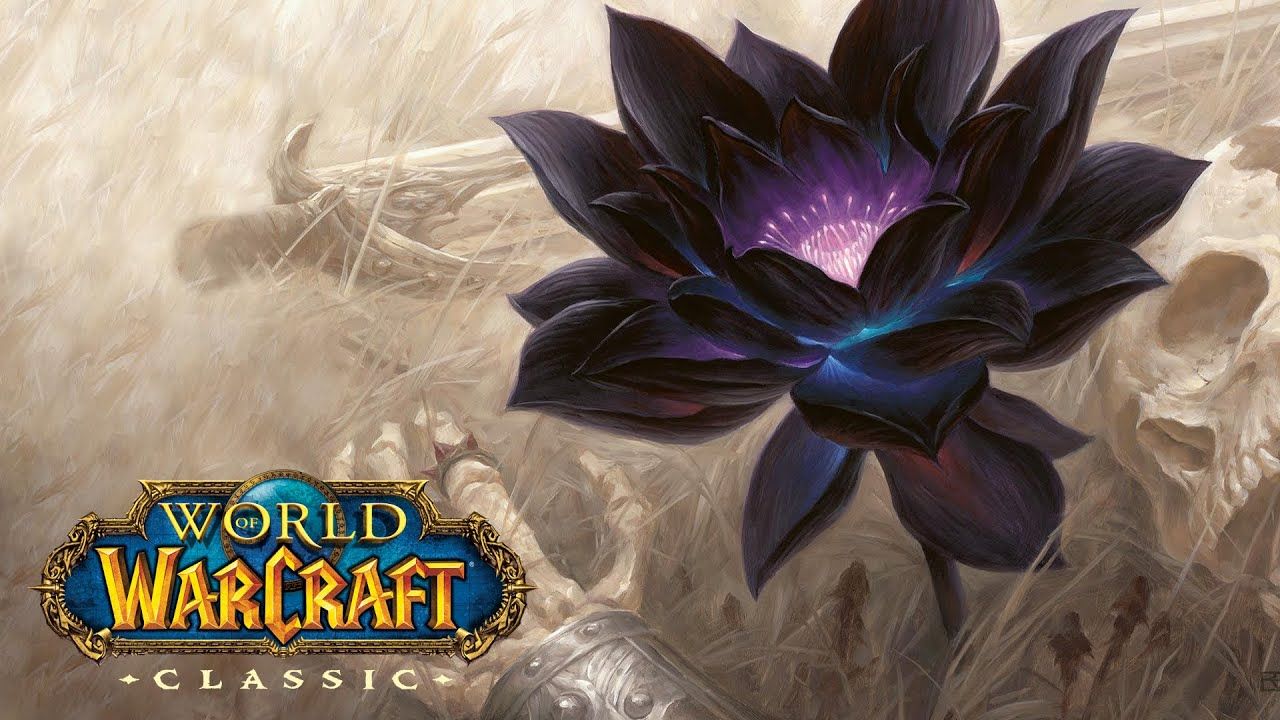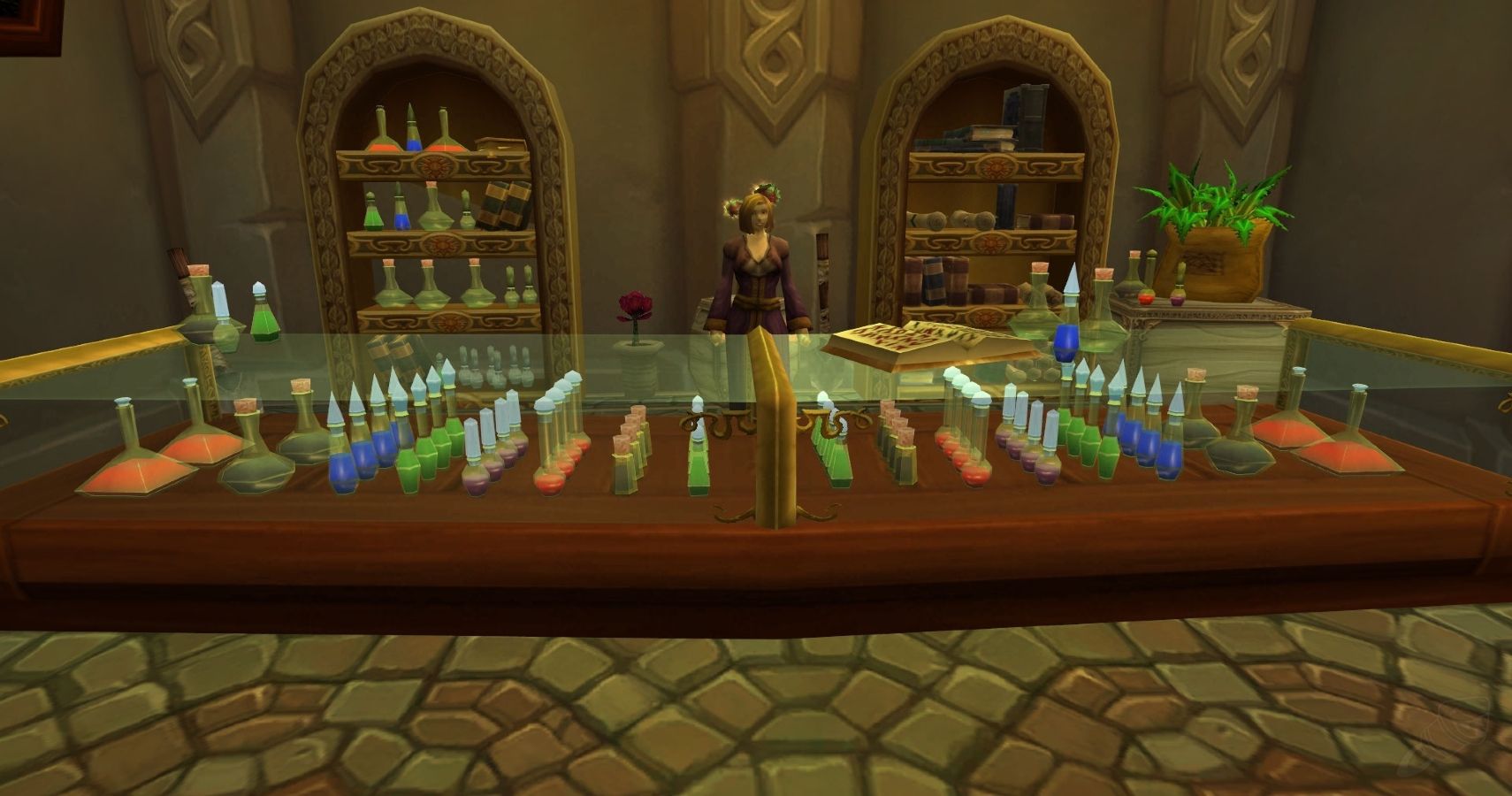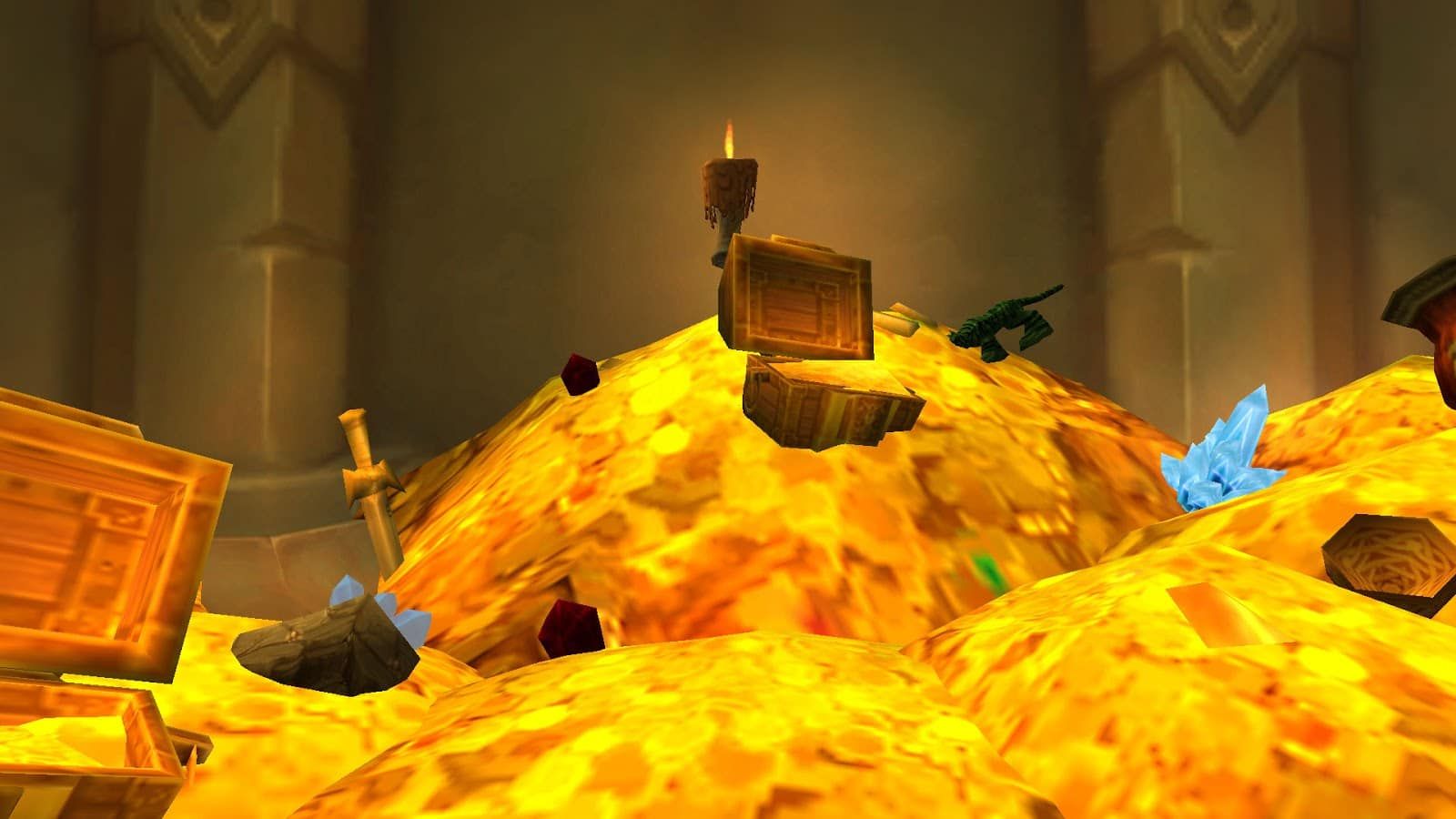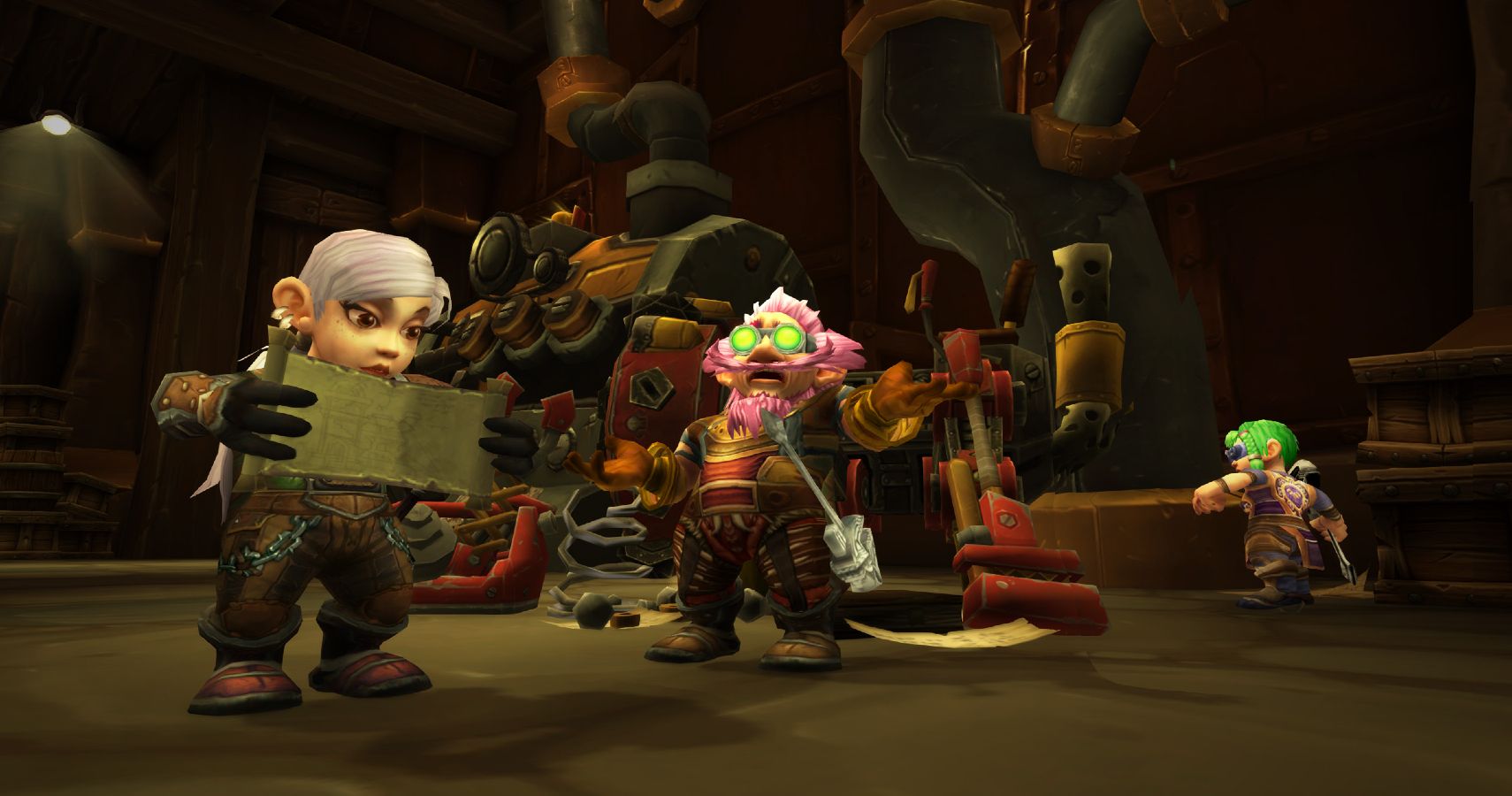Since World of Warcraft Classic launched in 2019, it has been fascinating to observe the ways that players have tackled everything from leveling, to end-game raiding, and the economy. One effect of playing Classic in 2020 is that the community is well aware of the value of certain end game items, which led to a small group of players going to great lengths to seize control the market for Black Lotus herbs, and after months of extreme tactics and Auction House manipulation, Blizzard stepped in to provide a fix for the better.
What Is Black Lotus?
Black Lotus herbs are the rarest of the rare in World of Warcraft Classic, and are needed to craft the most powerful flasks in the game, including Distilled Wisdom, Supreme Power, Flask of the Titans, and Chromatic Resistance. These flasks are so strong that many top raiding guilds require their members to be fully stocked, and in retrospect, we never saw endgame consumables reach this same level of power. Every expansion has had a similar style of consumable flask, but they were significantly toned down in overall power.
Given how powerful these consumables are, finding Black Lotus spawn nodes was no easy task. In the original game, technical limitations meant that only ten spawn locations of a node type could be active at the same time in the same zone. Blizzard has worked hard to keep the changes to a minimum between the original game and Classic, and the decision to keep node spawns of Black Lotus scarce was intentional and in line with this philosophy. So, what happens when scarcity by design meets artificial market supply limitation in the Auction House? Huge profits for a few, and most miss out.
The Black Lotus Mafia Takes Over
MMORPGs have always offered players several ways to enjoy the game. For some players, leveling alts is like an addiction, while others dominate an aspect of the in-game economy as their end goal. With the spawn nodes for Black Lotus are scarce, their spawn locations are largely predetermined like all other harvesting nodes in other gathering professions.
As a result, a small group of players have perfected their efforts to collect these as soon as they spawn. This includes having multiple accounts running at once with players coordinating their efforts and sharing information over Discord, or something similar. Within moments of a node spawn, these players could coordinate to harvest the Black Lotus long before an average player could hope to come across one on their farming routes.
By devoting huge amounts of their time, these types of players ensued that most Black Lotus remained harvested only among themselves. This put the majority of the herb supply in the hands of only a few individuals, and then to then secure total control of supply, these players would buy up the few remaining herbs on the Auction House that they might have missed.
With this vigilant dedication to tracking, collecting, and selling, the “mafia” could list Black Lotus on the Auction House for around 300 gold a piece, depending on the server, and since there was no other game in town, players had to pay or simply never have their precious flasks. For those who might not play Classic, 300 gold might not seem like a ton, but a quick search online reveals several third party, unauthorized gold sellers, and players would need to shell out around $18 USD for that much gold. Clearly, there is money to be made in the Black Lotus racket.
No Bots, No Problem?
A common misconception about this behavior was that bots were primarily being used to harvest nodes, but this is incorrect, and is a major reason why Blizzard was initially hesitant to make any changes. On the one hand, this makes sense, as players are free to do whatever they wish within the Terms of Service agreement for Classic, and obsessively harvesting materials to play the Auction House has always been perfectly fine. On the other hand, for this kind of behavior to be effective, the majority of players miss out on harvesting their own or must buy from a market with an inflated price due to stockpiling and creating artificial scarcity of supply.
Blizzard Steps In
Despite sticking to its commitment of keeping Classic as close to the original experience as possible, Blizzard made the smart decision to address this behavior in a way that would benefit most players at the cost of those who worked towards total market domination. On May 28, Blizzard announced that the spawn rate of notes would increase, and many new possible spawn locations would be added per zone. In addition, players are no longer to even see the spawn either on-screen or on their mini-map if they are dead, unless they have 300 Herbalism.
Almost immediately, prices crashed across all servers, for a short while, with reports of Black Lotus selling for 40 gold or lower, a drop of around 87%. This makes perfect sense, since the fear of a price drop due to a sudden flooding of supply made some sellers rush to cut their losses. However, an interesting thing has happened since then, as prices have steadily risen since the change was made.
Supply Shifts Right, New Consumers Drive Demand, And A New Equilibrium Forms
Over the past four weeks, prices have steadily increased, and while the cost of single herbs or flasks is not as high as it once was, it shows signs of continued increase. Some players think that the “mafia” is still at play, but this is not exactly true. While there may still be players dedicated to farming Black Lotus, the change by Blizzard has also meant that the average player is far more likely to find their own node, and the added supply has allowed players who were previously excluded from the market due to price to now participate as consumers. What we are seeing is a new equilibrium between supply and demand following Blizzard’s efforts to shift the supply curve to the right.
Changes In Classic: Are They Needed?
Watching these events develop since the launch of Classic in real time from an economic perspective has been fascinating, as the impact made by players and Blizzard on the supply and demand of Black Lotus can be described as textbook. Ultimately, Blizzard made changes that will allow for most players to have a better endgame experience by actually having a shot at farming, and for others, to purchase at somewhat reasonable. Whether or not Blizzard should make any changes at all is another debate entirely, but these are great lessons to learn for the impending release of The Burning Crusade Classic.






